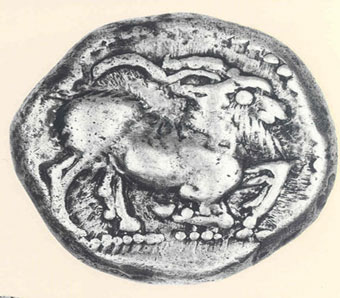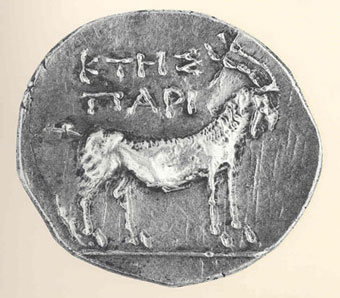Greek Islands Ancient Coins
"Paros Coin-Silver Stater,Silver Didrachm"
Paros is a large, important island to the west of Naxos, famous for its quarry marbles, which were the island's main source of wealth. Traces of human occupation have been located dating from the end of the 5th to the beginning of the 4th millennium BC. After this time, there was continuous human habitation during the Bronze Age, the Mycenaean period, and Geometric times. In the 7th c. BC, a famous school of sculpture developed on Paros, working with the superb Parian marble. This school produced some fine sculptors, such as Agorakritos and Skopas. The kouroi and korai, typical examples of the sculptor's art, discovered on the island are unequivocal evidence for the artistic development of the Parians. The period when the island was at its cultural zenith is dominated by the name of Archilochos.
Towards the end of the 5th c. BC, Paros was under Athenian suzerainty, and in the year 378 BC it was a member of the Second Athenian League, from which it seceded a few years later (357 BC) after an agreement with the Chians, with whom the Parians enjoyed closer relations.
The island had a large and interesting coinage. The goat, the preeminent iconographic type both on the Archaic silver staters struck on the Aeginetan standard (late 6th - early 5th c. BC) and on the later issues on the extensive stock-raising practised on the island.
On the issues of the late 3rd c. BC, the representations are devoted to Dionysos and Demeter; there was a temple to the latter on Paros which is attested by the treaty of isopoliteia between Paros and Allaria on Crete.







